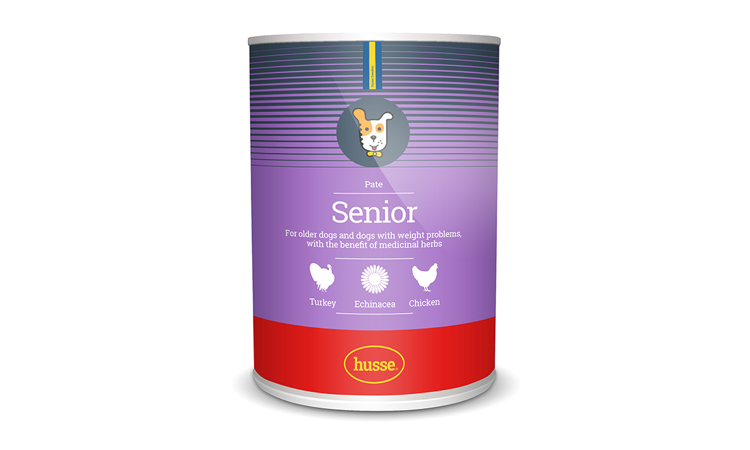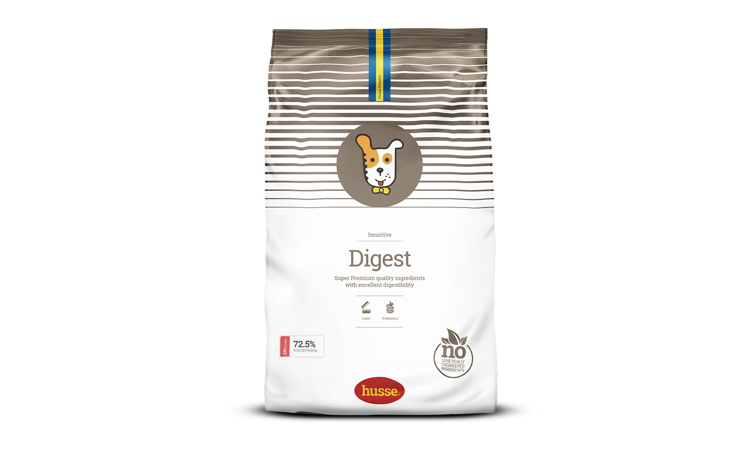Whether you’re a first-time dog owner or if you’ve enjoyed the company of dogs all your life, choosing between different types of dog foods can seem confusing. Even choosing between two of the most widely available shop-bought diets, wet and dry, there’s so much conflicting advice. So we asked our friends at Husse, who make dog food that’s enjoyed all over the world, to give us a run-down of the pros and cons of these two options when choosing dog food to help you decide for yourself which is the best option for your dog.
Wet Food Pros

Wet food can contain more protein than dry food (also known as kibble) especially when comparing a high-quality wet food to a budget dry food. It is always a good idea to check the analytical constituents on the labelling for protein content as certain types of dogs and dogs at different life stages will need more protein than others, with puppies being top of the list as they need plenty of protein to support healthy growth and development.
The level of moisture in wet food is typically around 75% which means it can be good for hydration and urinary tract (especially for dogs that are not drinking adequate amounts of water). The soft squidgy texture of wet food is good for dogs with small mouths or missing teeth, it is also good for dogs that have lost some sense of smell due to age or illness (generally has a stronger scent than dry food). Both the stronger smell and taste of wet food can make eating wet food a more pleasurable experience for your dog.
Wet Food Cons
Despite the palatability of wet food, it does have downsides, too. Wet food can be messy, inconvenient and uneconomical. It will quickly become inedible once open (although it does have a longer shelf life than dry food when sealed) and needs to be covered, refrigerated and used quickly. Dogs whose diet only consists of wet food may require more attentive dental care – however, it’s been widely discussed that dry food is not a valid substitute for regular cleaning routine of raw bones or dental sticks, brushing and check-ups with your vet.
Other downsides to wet food include possible weight gain – as with all foods, it’s important to check the nutritional values of the food. Lastly, a wet diet can lead to loose doggy bowels or runny dog poo, making cleaning up a more challenging experience!
Dry Food Pros

One of the main benefits of dry food is convenience and cost effectiveness – you can buy it in bulk and can easily portion out the perfect amount for your dog.
Dry food is easy to store and can be left out for hours for your pets to eat at their own pace, some say it can be left out for days although this is not recommended due to the increased chances of contamination.
High-quality premium dry food brands normally come with all the nutritional requirements and nothing needs to be added apart from providing the dog access to clean drinking water. Because of its dry nature, dry food is more energy-dense which makes it better suited to active dogs. And lastly, dry food can mean firmer, smaller stools making picking up after your dog a slightly less gross experience!
Dry Food Cons
However, dry food doesn’t offer the hydration of wet food and can seem less appealing to your dog. Dry food sometimes contains grains which have been known to be the cause of allergies or digestion issues. Budget dry foods are likely to contain more preservatives and unnatural additives.
Husse provides dog foods to meet the needs of dogs of all ages and sizes, so no matter what your dog prefers to eat they’ll have something for you. If your dog is older or puts on weight easily, why not try Husse Senior Chicken & Turkey Pate. Then there’s the dry option – Husse Lamb & Rice which is a gluten-free food, so it’s suitable for dogs who have sensitive stomachs.